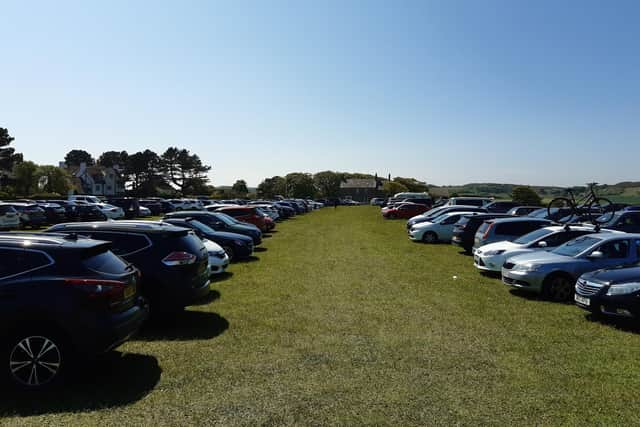Bamburgh Castle Estates bids to ease summer parking congestion in village
and live on Freeview channel 276
Bamburgh Castle Estates is seeking permission for extended seasonal parking at the Glebe Field next to St Aidan’s Church.
The site is currently restricted to 28 days use - although it was successfully used for 56 days on a temporary basis in the past two summers.
Advertisement
Hide AdAdvertisement
Hide AdThe return to pre-Covid planning rules prompted fears of a parking headache and led to this application.


A planning report on the applicant’s behalf states: ‘Bamburgh is already a very popular tourist destination and becoming increasingly so due to recent publicity of the area and the staycation culture that has developed and this has been compounded due to the global pandemic.
‘Public/visitor parking is limited within the village, in the context of peak visitor numbers, and is already recognised as a problem for the area, presenting potential highways safety concerns, access problems and damage to landscaping.
‘A recent survey by Bamburgh Parish Council concluded that “it is obvious that at many times of the year, Bamburgh has insufficient parking provision’.
Advertisement
Hide AdAdvertisement
Hide Ad‘In summary the proposal seeks to provide a much needed facility in the village during the busiest part of the tourist season, making a positive contribution to highway safety by providing a safe place to park cars away from the roadside verges along the feeder roads into the village and maintaining the character of the village core.’
There are no proposed works to the field, boundary walls or access, although the proposal includes for provision of a small hardstanding area for the placement of a parking attendants hut and small area of hardcore at the field entrance.
‘The proposal is based on the principal of minimal intervention,’ the report adds.
‘This allows the field to remain as grass, to minimise any visual impact and maintain the natural environment. It will also allow areas to be returned to grazing during quieter and off-peak times of the year. It will also minimise any potential impact on undiscovered archaeology within the site.’
Charging is proposed to offset the costs and to assist in supporting the conservation of the applicant’s heritage assets within the village.
